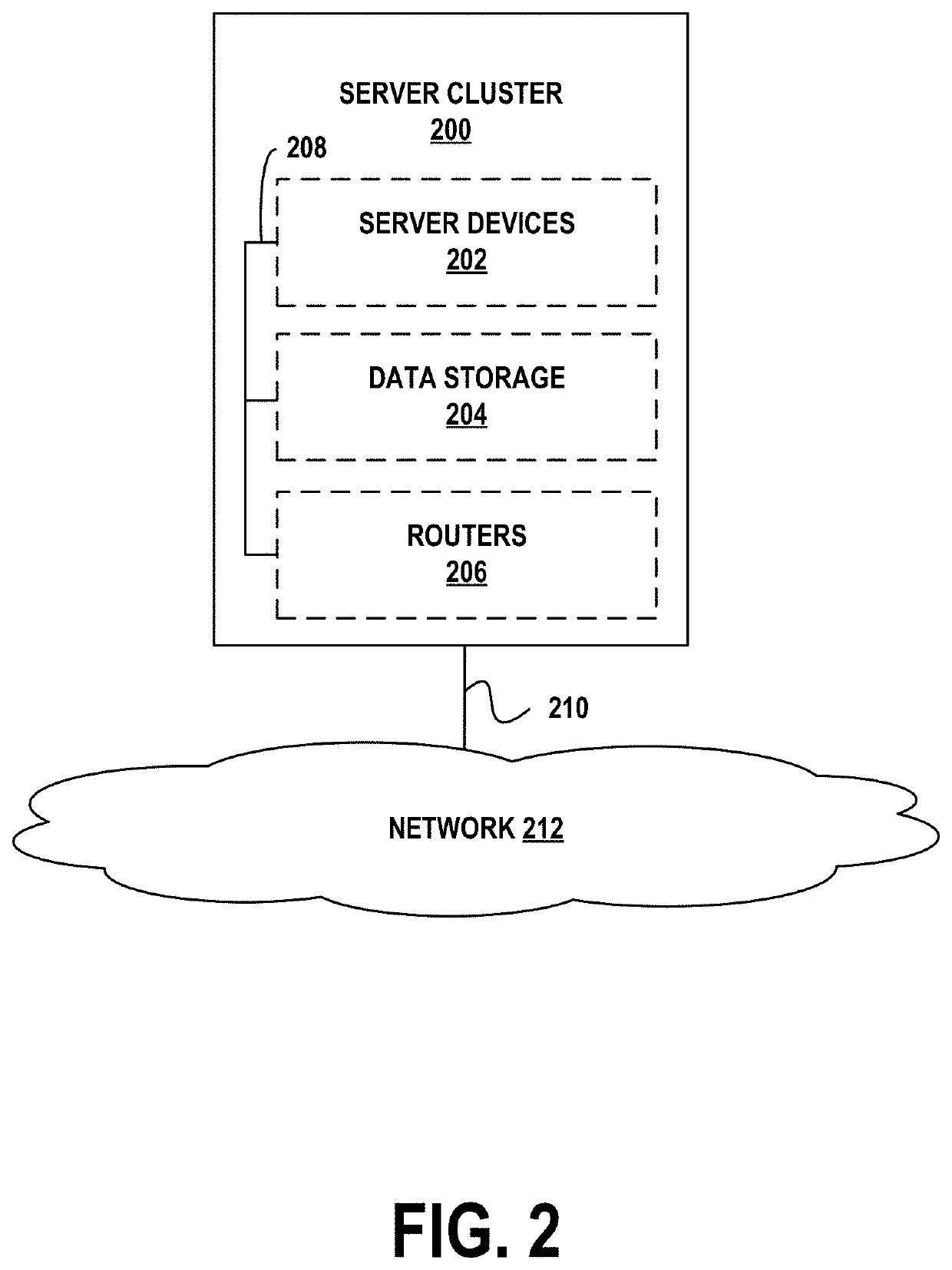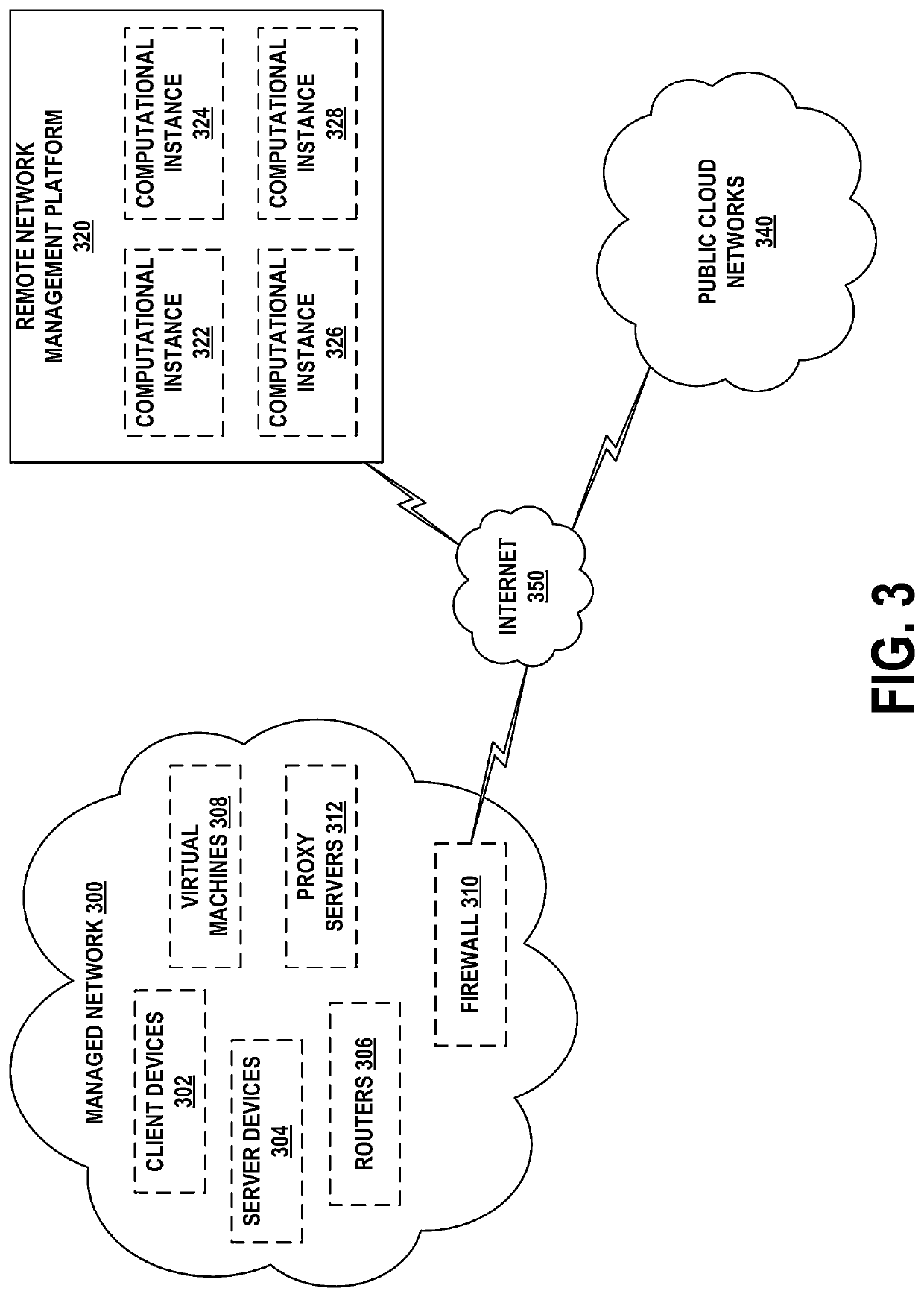It negatively impacts an enterprise's ability to run and grow its operations, innovate, and meet regulatory requirements.
The enterprise may find it difficult to integrate, streamline, and enhance its operations due to lack of a single
system that unifies its subsystems and data.
The exact physical location,
connectivity, and configuration of these computing devices may be unknown and / or unimportant to
client devices.
To the extent that these computing tasks can be performed in parallel, such a distribution of tasks may reduce the total time to complete these tasks and return a result.
As a consequence, a security breach in this
system may
impact all customers' data, creating additional risk, especially for entities subject to governmental, healthcare, and / or financial regulation.
Thus, if there is an outage due to hardware or
software errors, this outage affects all such customers.
Likewise, if the database is to be upgraded to meet the needs of one customer, it will be unavailable to all customers during the
upgrade process.
Often, such maintenance windows will be long, due to the size of the
shared database.
Maintenance down time is limited because the database only contains one customer's data.
These tasks may result in proxy servers 312
logging on, or otherwise accessing information from the particular device.
Thus, if the
server device is taken out of operation for maintenance, it is clear that the employee onboarding service and payroll service will be impacted.
Services might not be able to be fully determined by discovery procedures, and instead may rely on service mapping (e.g., probing configuration files and / or carrying out network
traffic analysis to determine service level relationships between configuration items) and possibly some extent of manual configuration.
This can include difficulties in obtaining such data originally (e.g., generating useful exploration “experiences” for an agent or other model trained via
reinforcement learning) and / or in selecting, curating, emphasizing, weighting, or otherwise applying available training data to train an
artificial neural network,
decision tree, or other
machine learning model such that the “rarer” or “more interesting” training examples adequately influence the trained model without being displaced by more common, and potentially “easier” to solve, training examples.
One aspect of this difficulty in acquiring and / or applying training data is the difficulty of generating an easily-computable, generally applicable objective function or other description for exploring an environment and / or selecting, curating, weighting, or otherwise emphasizing more useful training data.
Manually describing, in a computer-implementable manner, an objective function to identify “interesting” or “useful” training data or environmental states / inputs / regions can be difficult to do even when the broad meaning of “interesting” or “useful” can be conceptualized or articulated in human terms.
Indeed, in many applications it is difficult to even determine what such a goal should be in human terms.
For example, it is difficult to describe, in plain
human language, what makes an input
incident report “useful,”“complex,” or “difficult” with respect to determining a
problem statement or solution from the
incident report, classifying the
incident report, extracting useful information about the underlying operation of a managed network, or with respect to some other application of interest.
For example “Will the user be at work tomorrow?” would usually result in a “yes” response from the user but in cases of holiday, sickness, or a variety of other reasons, the response might be negative, leading to a different downstream
workflow.
Many traditional
reinforcement learning (RL) agents struggle with sparse-reward problems at least in part due to a lack of exploration.
However, this formulation can be practically challenging to train and optimize since there are many states that are dissimilar (e.g., visually dissimilar) but practically irrelevant (e.g. for a pushing task, moving a robotic end
effector without touching the object creates visual novelty but contributes little to task-related knowledge).
Prior methods that use artificial
curiosity / intrinsic motivation often rely either on strong
domain knowledge (e.g. labels of state dimensions, a goal-picking strategy) or are prone to getting stuck in local optima when a single meaningless stimulus creates enough surprise to capture the attention of the agent (e.g. a “noisy TV” input).
Other approaches rely on unrealistic assumptions and goal conditioning.
Vision is often not very accurate in detecting and handling shapes and occlusions.
A high prediction error on a given image indicates that the agent has had few interactions like this.
The overall
optimization problem at this step consisted of the policy learning (driven by intrinsic reward), the touch reconstruction loss, and the forward dynamics loss.
 Login to View More
Login to View More  Login to View More
Login to View More 


